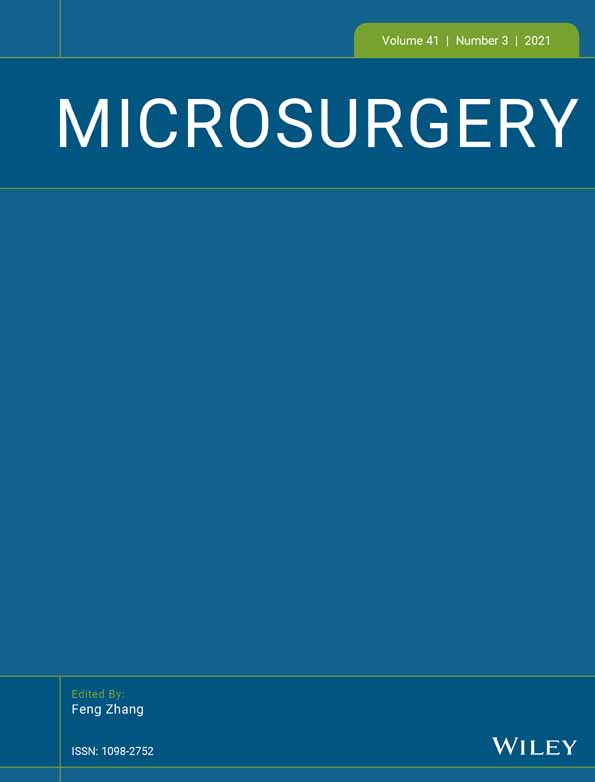Unilateral breast reconstruction with the free contralateral split breast flap using supermicrosurgical anastomosis: A case report
Mario F. Scaglioni and Timo Rodi have contributed equally to this study and should be considered as co-first authors.
Abstrct
Consecutive or simultaneous contralateral breast reduction is a frequent request from patients undergoing unilateral breast reconstruction. Both procedures can be combined using otherwise discarded tissue as a split breast graft for reconstruction of the contralateral side. There have been few reports on the use of pedicled split breast grafts. We present a 75-year-old female with multicentric mammary carcinoma following chemotherapy, mastectomy, axillary lymph node dissection and radiotherapy. She requested a reconstruction of the left breast as well as reduction of the right breast. Risk factors, including heavy alcohol and tobacco dependence and COPD, limited the surgical options. While a free flap breast reconstruction was the standard feasible option, we opted for a procedure with minimal surgery-related morbidity. The right breast was evidently tumor-free, and the patient had no family history of breast cancer. Reconstruction was performed 22 months postmastectomy. The split-breast free flap was based on the right internal mammary artery (IMA) perforator and harvested during the right-sided breast reduction. Microsurgical anastomosis was performed on the IMA perforator on the left side. Mastopexy was performed on the right side and the nipple-areola complex (NAC) was transferred to its new position as a free graft to complete the breast reduction. A tattoo of the left NAC was performed 4 months postreconstruction. There was complete flap survival with a pleasant cosmetic result. Split breast reconstruction could be an alternative to more common procedures. However, this approach is only feasible in patients with hypertrophic contralateral breast and absence of risk factors for developing a second primary breast cancer.




